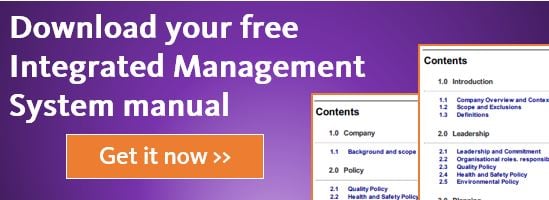You have created your quality management system (QMS) and you have your Certification Body all signed up and ready to go, now is the time to book in your Stage 1 audit.
Stage 1 is where the Certification Body (CB) confirms that you are ready for the full audit. The CB checks that you have in place all the required processes, related procedures and that your resources are ready.
Most CBs recommended that this stage 1 audit is conducted on your site. However, if the CB already has experience of you and your industry, then this audit could be done by off site.
Reviewing the Scope of the Management System
During the audit the auditor will review your scope of the management system.
They will obtain information on your organisation’s processes and operations, the equipment being used, the levels of control that you have established as well as any applicable statutory or regulatory requirements.
Your internal audits and management reviews will be evaluated to ensure they are being planned and performed.
The CB will determine the overall level of implementation of the quality management system will decide if you are ready to move forward with the Stage 2 Certification Audit.
They will the review the allocation of resources and details for the next phase of the audit.
Determining Readiness for Stage 2 Audit
The CB will give you a stage 1 report to outline the state of your readiness for Stage 2. They will identify any areas of concerns that could be classified as potential non-conformance during the Stage 2 Audit.
The Stage 1 audit is much shorter in duration than stage 2. The audit will usually be carried out in one or two days. If you have more than one location, the audit would usually be carried out at your head office location.
Typically there are a few weeks between a Stage 1 and a Stage 2 audit. This is to allow you to address any observations prior to the full audit (called a Stage 2 audit).
In addition, the CB needs to determine the size of the audit team to conduct the audit. They also need to determine if they need technical experts are required to help with complex technicalities during the audit.
So the objective of a Stage 1 Audit is to determine your readiness for their Stage 2 audit of your QMS.
Auditing at Mango
Here at Mango, the stage 1 audit was conducted remotely. Because we use our product Mango to manage our QMS the auditor didn’t need to visit us at our site. We gave the auditor a username login (and a password) to Mango.The benefit of this approach was:
- The auditor could do this in their own time.
- The audit didn’t hold up any of our personnel in a visit.
- Communication was all online.
- Questions were emailed though and easily answered.
- Auditor was not under pressure to rush through the audit
- Saved thousands $$$ on flights and accommodation, because the auditor was from Australia
We only had a couple of areas to tidy up. We even threw in a curve ball in the internal audit procedure. We added a couple of funny statements just to check that the auditor was doing their job. Fortunately he picked those up. At the end of the Stage 1 our CB determined that we were ready for Stage 2.
Takeaways
- To save time and money, ask the auditor to do the Stage 1 audit remotely.
- Make sure everything is ready:
- Internal audits are done
- Management Review done
- QMS documentation is ready
- Capture evidence that the systems are in place
- Learn from the findings from the CB audit report.
View previous blogs in this series "How to Implement a QMS and Achieve ISO 9001 Certification":
How to Implement a QMS and Achieve ISO 9001 Certification - Part 1: Introduction
How to Implement a QMS and Achieve ISO 9001 Certification - Part 2: Customer Focus
How to Implement a QMS and Achieve ISO 9001 Certification - Part 3: Leadership
How to Implement a QMS and Achieve ISO 9001 Certification - Part 4: Engagement of People
How to Implement a QMS and Achieve ISO 9001 Certification - Part 5: Process Approach
How to Implement a QMS and Achieve ISO 9001 Certification - Part 6: Improvement
How to Implement a QMS and Achieve ISO 9001 Certification - Part 7: Evidence Based Decision Making
How to Implement a QMS and Achieve ISO 9001 Certification - Part 8: Relationship Management
How to Implement a QMS and Achieve ISO 9001 Certification - Part 12: Clause 5.2 Policy
How to Implement a QMS and Achieve ISO 9001 Certification - Part 15: Clause 6.2 Objectives
How to Implement a QMS and Achieve ISO 9001 Certification - Part 16: Clause 7.1 Resources
How to Implement a QMS and Achieve ISO 9001 Certification - Part 27: Clause 9.2 - Internal Auditing
How to Implement a QMS and Achieve ISO 9001 Certification - Part 28: Clause 9.3 - Management Review
How to Implement a QMS and Achieve ISO 9001 Certification - Part 29: Clause 10 - Improvement
.png?width=200&height=51&name=image%20(2).png)





